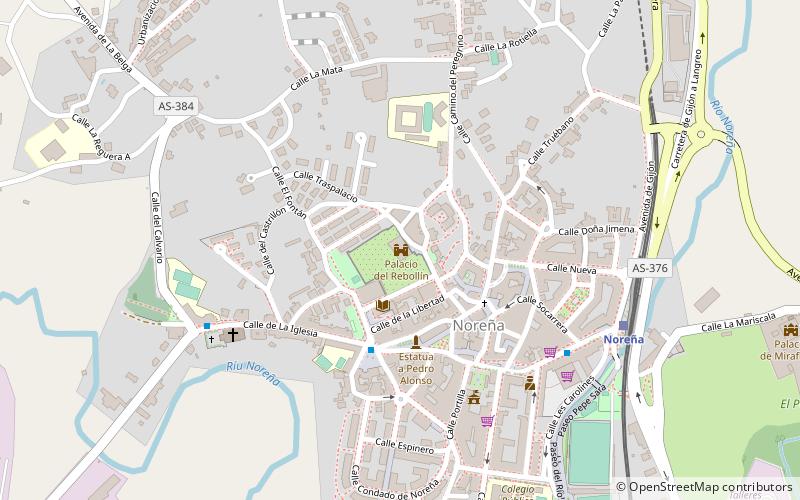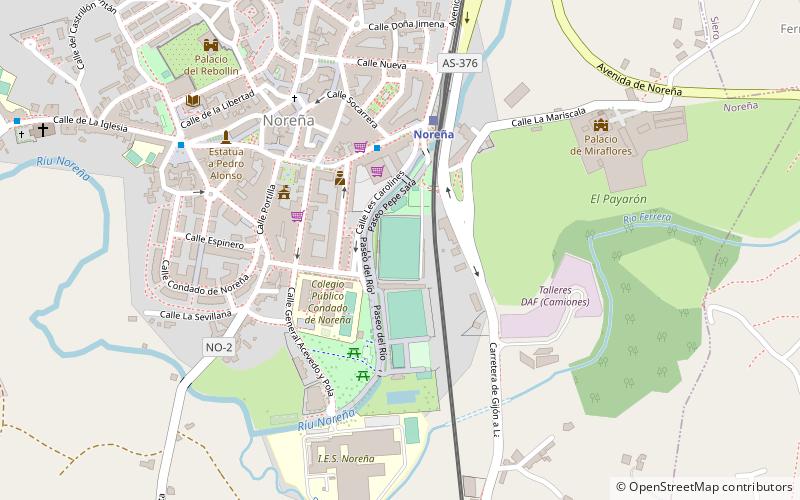Palacio del Rebollín, Noreña


Facts and practical information
Rebollín Palace is a Spanish rural palace located in the Asturian town of Noreña.
At the top of the Rebollín is the palace-house of Rebollín. Its origin dates back to the 16th and 17th centuries and has given shelter to the great Asturian families such as the Argüelles, the Llano and the Quirós, among others. The main façade, the south one, is open to the landscape by two twin semicircular arches on smooth imposts, which give way to the large hall, which in turn communicates directly with the central courtyard, the staircase and the garden that we will mention later. Another smooth and continuous impost along the façade separates the ground floor from the upper floor, which has five balconies, with wrought iron balusters, being common the one corresponding to the central balconies, which match the openings of the ground floor. On the sides of the central balconies, the arms of the house -Argüelles and Quirós- in well carved coats of arms.
The west façade, designed for a pleasure garden, has six balconies on the upper floor, with corresponding windows on the ground floor, except to the southwest, where another pair of twin semicircular arches are repeated, designed to give a view of the garden that lead to a small vestibule that communicates, as we said, with the entrance hall. At the back of the garden stands a square dovecote tower, although it has been damaged since the civil war. It is a very unusual building in Asturias, with a ground floor and two storeys, the first floor opening onto a wide round arch on smooth imposts, on the side facing the palace, and with access to the first floor by means of a staircase supported by an octagonal half-column, attached to the north wall. This construction has few examples in our region, and suggests an architect who was familiar with foreign models, especially French.
On the north façade there is an inscription naming the first lord of the palace: "This work was done at the expense of D. Menendo de Llanes Cienfuegos Campomanes y Argüelles. Year 1795".
Inside, the open courtyard has a square floor plan with twelve classical Tuscan columns, four on each side, sculpted in sandstone. On the north side there is a vestibule that opens onto the courtyard through a triple arcade. The upper floor has a wooden corridor in quite good condition. On the first floor we find a small oratory, on whose altar there is a metal Christ and several images, among which the Virgin of Covadonga stands out. It was the house of Alonso Marcos de Llanes Argüelles, archbishop of Seville in the time of Carlos III.
Noreña
Palacio del Rebollín – popular in the area (distance from the attraction)
Nearby attractions include: Church of Santa María de Bendones, Church of San Esteban de Aramil, nucleo Zoológico el Bosque, Colloto.






